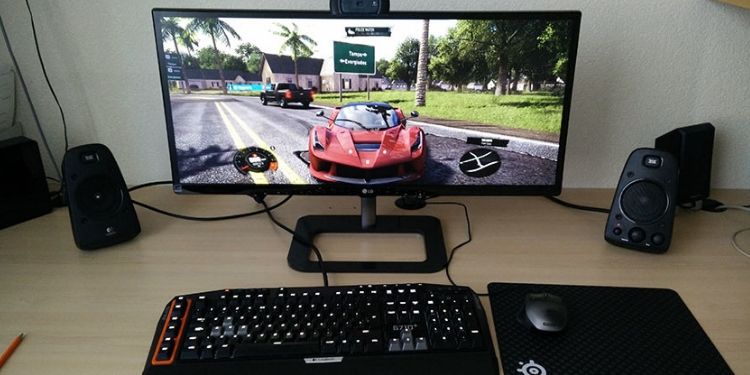Last Updated on
Even the most powerful gaming computers would offer a terrible gaming experience if they were to be paired with junk monitors. And vice versa, even mediocre gaming rigs can offer a shockingly nice gaming experience if paired with a decent monitor.
Knowing this, we set out to see how low you can go before seriously sacrificing performance, and the sweet spot of value and affordability seemed to be just under $150. Knowing this, we set out to find the best gaming monitor under $150 and rounded up our final five here.
How to Pick the Best Gaming Monitor Under $150 for Your Needs
Even though we’ve already looked at our picks for the best affordable monitor you might still have a lot of questions. Before spending any of your hard earned money, let’s look at some key things to keep in mind when shopping for a monitor.
Refresh Rate
For a monitor that is intended for gaming, this is arguably the most important thing for most people to keep an eye on.
The refresh rate is how many frames per second a monitor can display an image. On our list we have monitors that are either 60Hz or 75Hz, meaning they can display a max of either 60 or 75 frames per second respectively.
Higher frame rates create smoother looking motion with less motion blur which looks great in fast-paced games that involve a lot of movement such as driving games or even something like Doom 2016.
It’s important to remember, however, that a monitor can only take advantage of high frame rates if your computer can run the game at high frame rates, so it’s not always necessary to have a 144Hz monitor if you play demanding AAA titles and don’t have something like an RTX2080 in your system.
Response Time
Response time is closely related to refresh rate in a lot of ways and is the second most important aspect that many gamers will want to keep in mind. Response time is a measurement, in milliseconds, of how long it takes for each pixel to change from one state to the next, usually white to black or grey to grey.
This is important as some VERY cheap monitors will have response times so high that the pixels can’t completely change from one color to the next before the next frame is ready. This results in a streaky and blurry look. However, this only happens if you have response times over 17ms, which none of the monitors on our list– or any of our lists– come even remotely close to.
At lower response times you can actually give yourself a slight competitive edge. For example, a monitor with a 10ms response time will show an enemy emerging from a doorway a brief moment later than a monitor with a 2ms response time. This is actually significant since the average human response time is about 17ms. Shaving even just a few milliseconds off the time it takes for each frame to appear on your monitor can give you a quantifiable advantage in close situations.
Resolution and PPI
Resolution is something that most people are familiar with at least to some degree. Terms like “1080p” and “4k” are pretty common in the vocabulary of even non-tech savvy people. Resolution is a measurement of how many pixels there are on a screen in total, and is given in two measurements, horizontal pixels and vertical.
Most of the monitors found on our list, and at this price in general, are going to be standard 1080p meaning they have 1920 by 1080 pixels. The ultrawide we looked at from LG is the one exception because it has more pixels to accommodate it’s wider aspect ratio, coming in at 2560 by 1080.
PPI, on the other hand, stands for pixels per inch and is a measurement of how densely packed the pixels are on a screen. This differs from the resolution since resolution is the total number, so larger monitors of the same resolution will have lower pixels per inch, or pixel density.
The higher the density of pixels, the more clear an image will appear.
Color Gamut
Finally, in our review of the Phillips monitor, we mentioned the color gamut. This is actually a fairly complex matter and it involves a lot of color science, but in short, color gamut is a standardized range of colors that are established by leaders in design and video editing, such as Adobe.
Many of the monitors on this list aren’t color calibrated at all meaning they have no specific color gamut, but the Phillips monitor covers over 100% of the Adobe sRGB color gamut which is used by most graphic design and video editing professionals. This ensures that how something looks on your screen while you work on it is an accurate and true representation of the colors of that image or video.
This is very similar to how reference style headphones work and ensures consistent quality across various work stations and end-user systems. This is very important to keep in mind and look for if you do any kind of photo or video editing either for a living or as a hobby.
We always try our best to give the most accurate recommendations and satisfy all of our beloved readers. If every monitors that we’ve listed above are a little bit outside of your current budget, head over to this list of best gaming monitor under $100.

